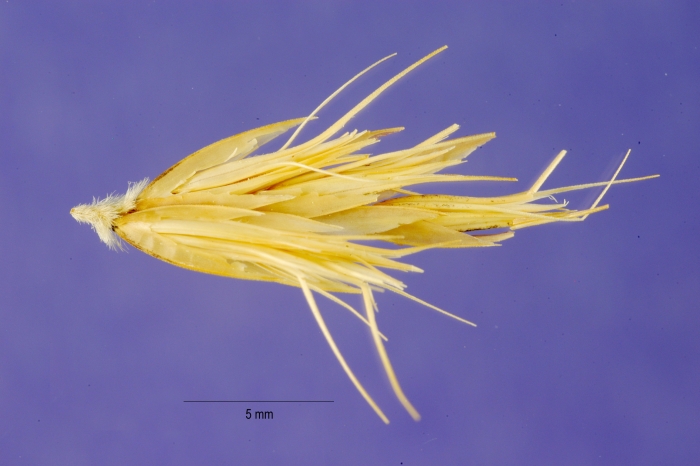Slender Grama
(Bouteloua repens)
Slender Grama (Bouteloua repens)
/
/

Jose Hernandez, hosted by the USDA-NRCS PLANTS Database
Public domain
Image By:
Jose Hernandez, hosted by the USDA-NRCS PLANTS Database
Recorded By:
Copyright:
Public domain
Copyright Notice:
Photo by: Jose Hernandez, hosted by the USDA-NRCS PLANTS Database | License Type: Public domain | License URL: https://creativecommons.org/public-domain/ | Uploader: CaptainEek | Publisher: Wikimedia Commons | Title: Bouteloua_repens_USDA_image.jpg | Notes: =={{int:filedesc}}== {{Information |description={{en|1=''Brachychiton rupestris'' (cultivated, labelled) juvenile leaf, Royal Botanic Gardens Melbourne, Australia}} |date=2014-12-14 |source={{own}} |author=[[:en:User:M




















Estimated Native Range
Summary
Bouteloua repens, commonly known as Slender Grama, is an evergreen perennial grass native to arid and semi-arid regions such as deserts and grasslands in the Neotropics, including South America, Central America, the Caribbean, and the southern United States, notably Texas. It typically grows to about 20 cm (7.9 in) tall, forming dense mats that are well adapted to hot, dry climates. Slender Grama produces delicate inflorescences at the tips of its culms, with groups of four to twelve spikelets that may go unnoticed unless closely observed.
Slender Grama is valued for its drought tolerance and ability to form a low-maintenance ground cover, making it suitable for xeriscaping and erosion control in arid landscapes. It thrives in full sun and requires minimal water once established, preferring soils with good drainage. This grass is also known for its exceptional resistance to cattle grazing, which makes it a practical choice for rangeland restoration and sustainable livestock management. However, it may not be as competitive in regions with higher rainfall or in gardens that receive regular irrigation.CC BY-SA 4.0
Slender Grama is valued for its drought tolerance and ability to form a low-maintenance ground cover, making it suitable for xeriscaping and erosion control in arid landscapes. It thrives in full sun and requires minimal water once established, preferring soils with good drainage. This grass is also known for its exceptional resistance to cattle grazing, which makes it a practical choice for rangeland restoration and sustainable livestock management. However, it may not be as competitive in regions with higher rainfall or in gardens that receive regular irrigation.CC BY-SA 4.0
Plant Description
- Plant Type: Grass
- Height: 1.5-2 feet
- Width: 0.5-0.8 feet
- Growth Rate: Moderate
- Flower Color: N/A
- Flowering Season: Spring, Summer, Fall
- Leaf Retention: Evergreen
Growth Requirements
- Sun: Full Sun
- Water: Low
- Drainage: Medium, Fast
Common Uses
Bird Garden, Drought Tolerant, Groundcover, Low Maintenance
Natural Habitat
native to arid and semi-arid regions such as deserts and grasslands in the Neotropics, including South America, Central America, the Caribbean, and the southern United States, notably Texas
Other Names
Common Names:
Scientific Names: , Bouteloua repens, Bouteloua filiformis, Bouteloua bromoides, Bouteloua heterostega, Bouteloua humboldtiana, Heterosteca juncifolia, Bouteloua pubescens, Bouteloua juncifolia, Eutriana juncifolia
GBIF Accepted Name: Bouteloua repens (Kunth) Scribn. & Merr.